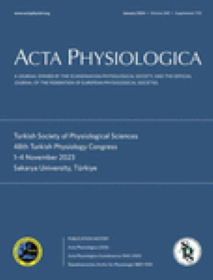Skeletal Muscle Fatigue in Rats Is More Consistently Related to Increased Inorganic Phosphate Concentration Than Acidosis
Abstract
Aim
Distinguish the relative importance of intramuscular acidosis (hydrogen ion) and inorganic phosphate in skeletal muscle fatigue in vivo in rats.
Methods
We used direct sciatic nerve electrical stimulations to evoke twitches at different frequencies of contraction (0.25-, 0.50-, 0.75-, 1-, 2-, and 4-Hz) in the triceps surae to impose a range of intramuscular metabolic perturbations, quantified by phosphorus nuclear magnetic resonance spectroscopy. Linear mixed-effects models were used to analyze the relationships between peak twitch force and intramuscular hydrogen ion or inorganic phosphate concentration (as Z-scores) during the protocols that decreased peak twitch force (2- and 4-Hz).
Results
Although intramuscular hydrogen ion and inorganic phosphate concentrations increased with increasing frequencies of contraction, peak twitch force did not begin to decrease until a “threshold” inorganic phosphate concentration was reached. A given hydrogen ion accumulation was associated with a greater decrease in peak twitch force during 4-Hz compared to 2-Hz (β: −1.19 vs. −0.62, p < 0.001). In contrast, the decrease in peak twitch force for a given inorganic phosphate accumulation was not different between 4- and 2-Hz (β: −0.89 vs. −0.85, p = 0.889).
Conclusions
The inconsistent relationship between the decrease in twitch force and intramuscular hydrogen ion accumulation is not congruent with the primary mechanisms by which acidosis is thought to mediate muscle fatigue. In contrast, the discernible twitch force–inorganic phosphate breakpoint and the consistent relationship between the decrease in twitch force and intramuscular inorganic phosphate accumulation are congruent with the concept of a critical concentration beyond which inorganic phosphate mediates muscle fatigue.


 求助内容:
求助内容: 应助结果提醒方式:
应助结果提醒方式:


